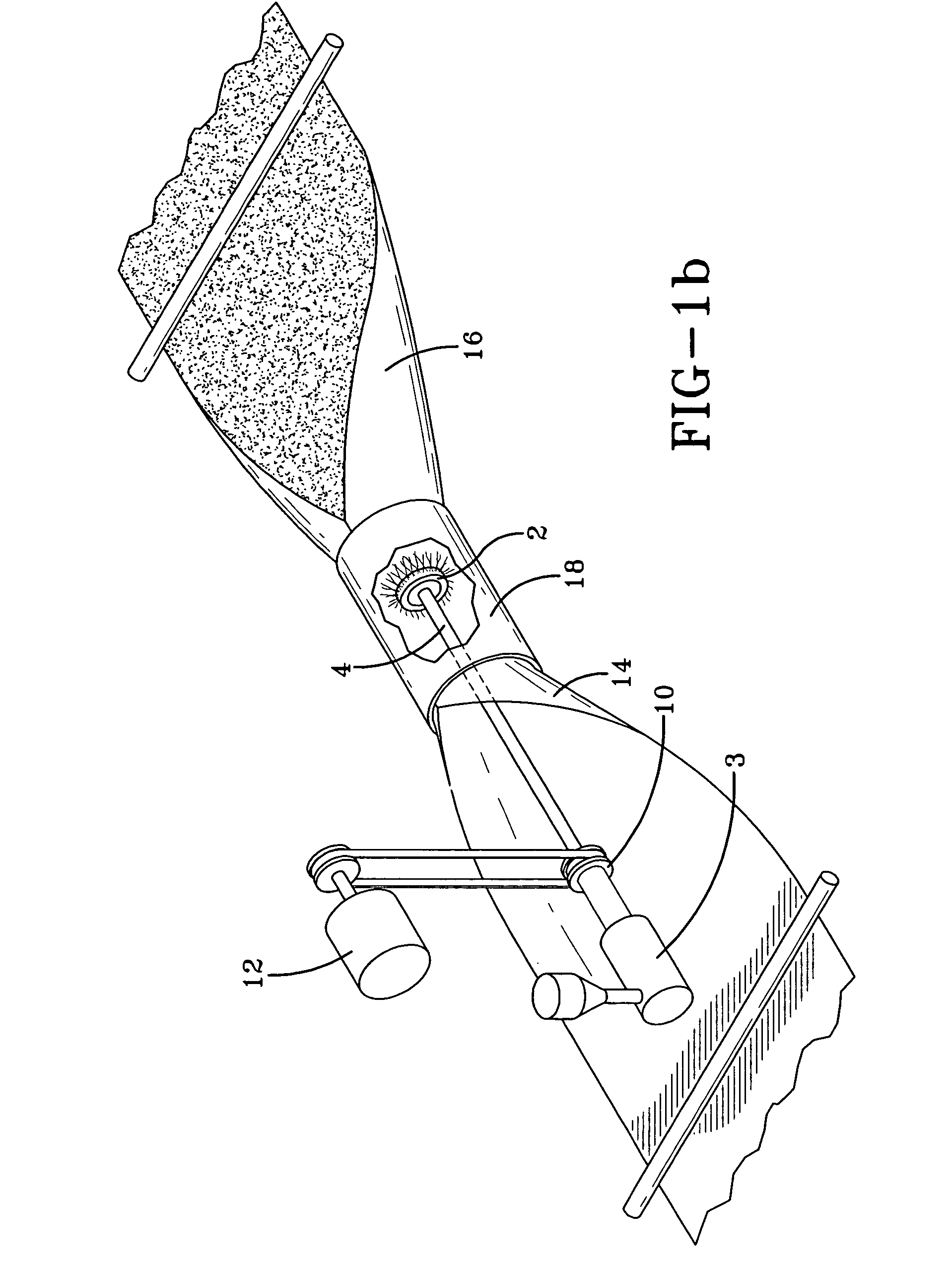Fiber and nanofiber spinning apparatus
a technology of fiber and nanofiber, which is applied in the direction of dough shaping, manufacturing tools, applications, etc., can solve the problems of limited control over these expensive dies, inability to melt other polymers such as acrylics, and limited options in the fiber spinning area, so as to achieve low cost, versatile and cost-effective spinning methods
- Summary
- Abstract
- Description
- Claims
- Application Information
AI Technical Summary
Benefits of technology
Problems solved by technology
Method used
Image
Examples
Embodiment Construction
[0031]The present invention generally relates to an apparatus for extruding and spinning fibers and relates more particularly to the production of a homogeneous web of fibers. The plate configuration on the apparatus is of particular importance, as it allows production of nanofibers and other larger fibers by centrifugal force. The stacked, thin plates and the interchangeability of these plates, along with the variations of slots, holes or grooves for extrusion of fluid materials is novel to the art of spinning fibers. The device operates by stacking the plates and allowing a serpentine flow for an even, uniform pressure balance and improved fluid distribution. Stacked, “bridged” plates with small serpentine flow throughways can also be strategically constructed as built-in filters to material passing through the plates. The interchangeability aspects of the plates allows for a variety of configurations to be employed. These variations include, but are not limited to, changing the s...
PUM
| Property | Measurement | Unit |
|---|---|---|
| pressure | aaaaa | aaaaa |
| angle | aaaaa | aaaaa |
| diameter | aaaaa | aaaaa |
Abstract
Description
Claims
Application Information
 Login to View More
Login to View More - R&D
- Intellectual Property
- Life Sciences
- Materials
- Tech Scout
- Unparalleled Data Quality
- Higher Quality Content
- 60% Fewer Hallucinations
Browse by: Latest US Patents, China's latest patents, Technical Efficacy Thesaurus, Application Domain, Technology Topic, Popular Technical Reports.
© 2025 PatSnap. All rights reserved.Legal|Privacy policy|Modern Slavery Act Transparency Statement|Sitemap|About US| Contact US: help@patsnap.com



